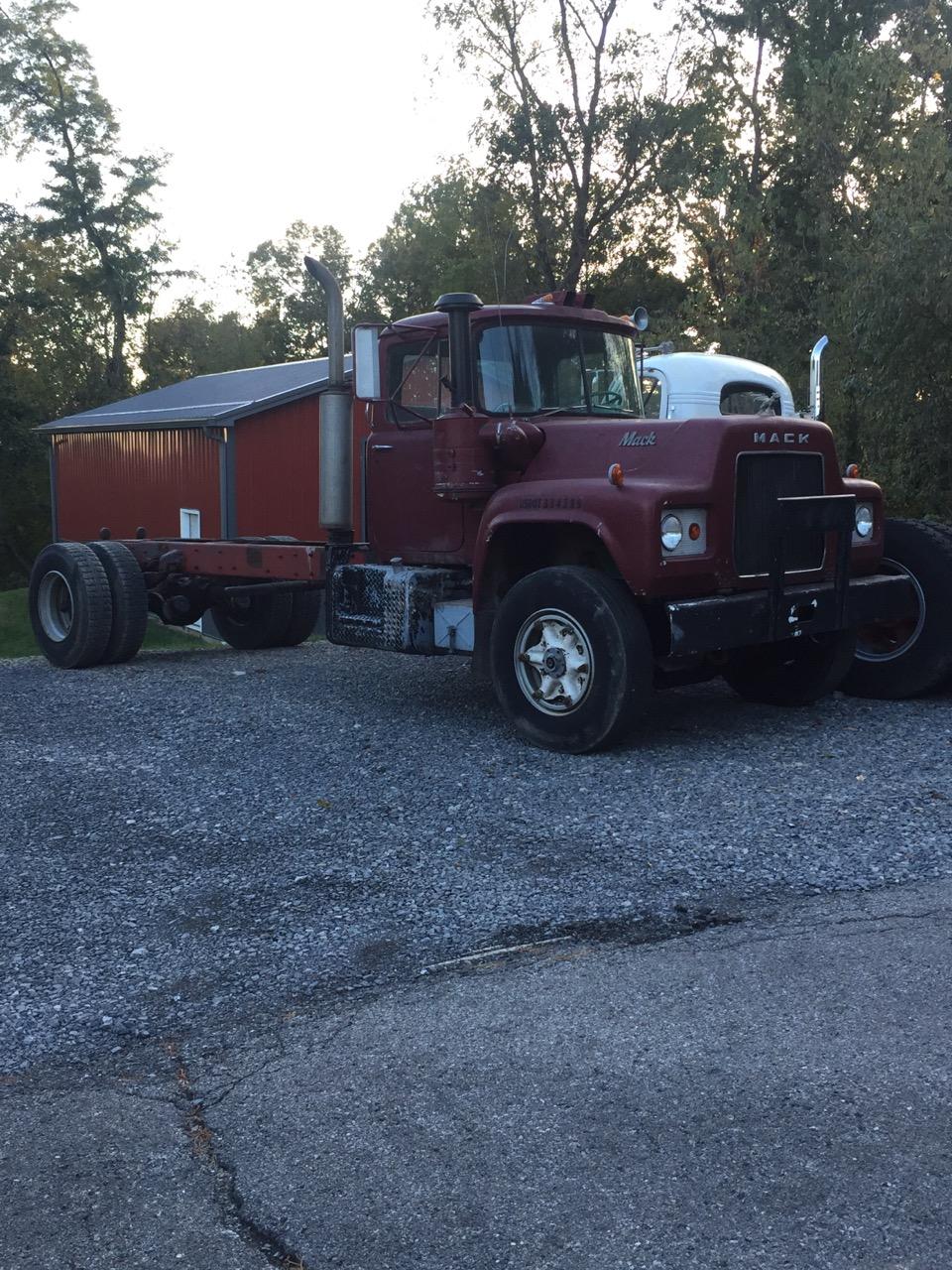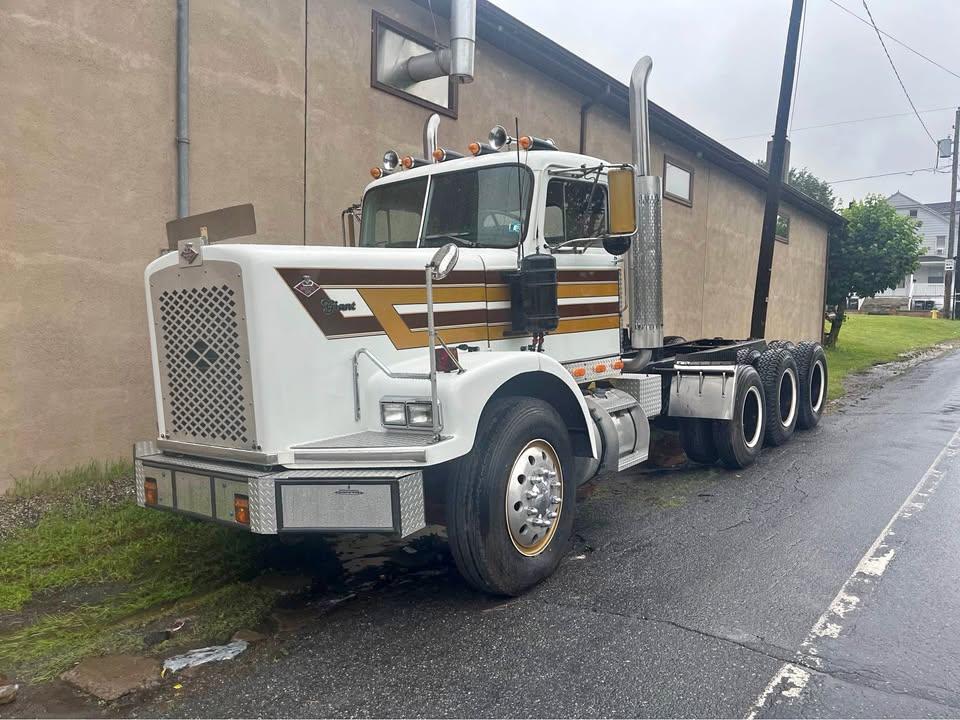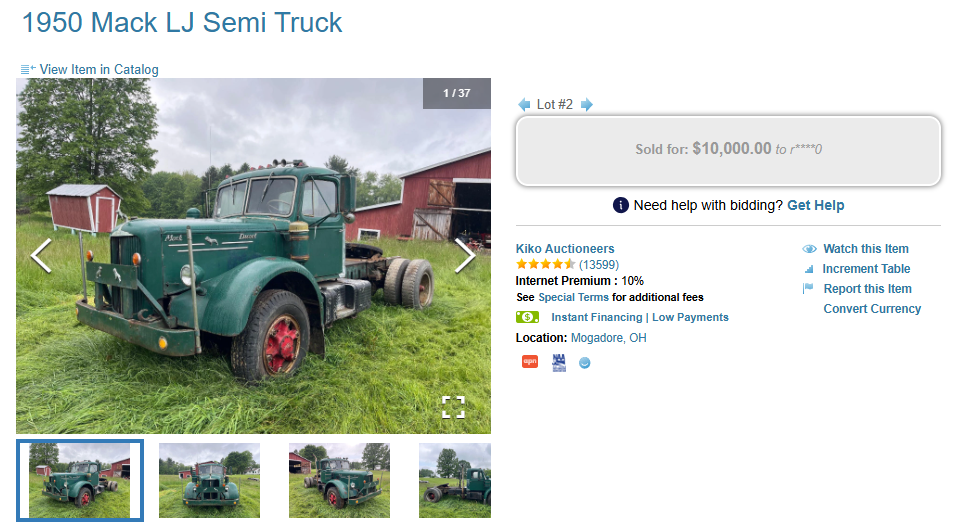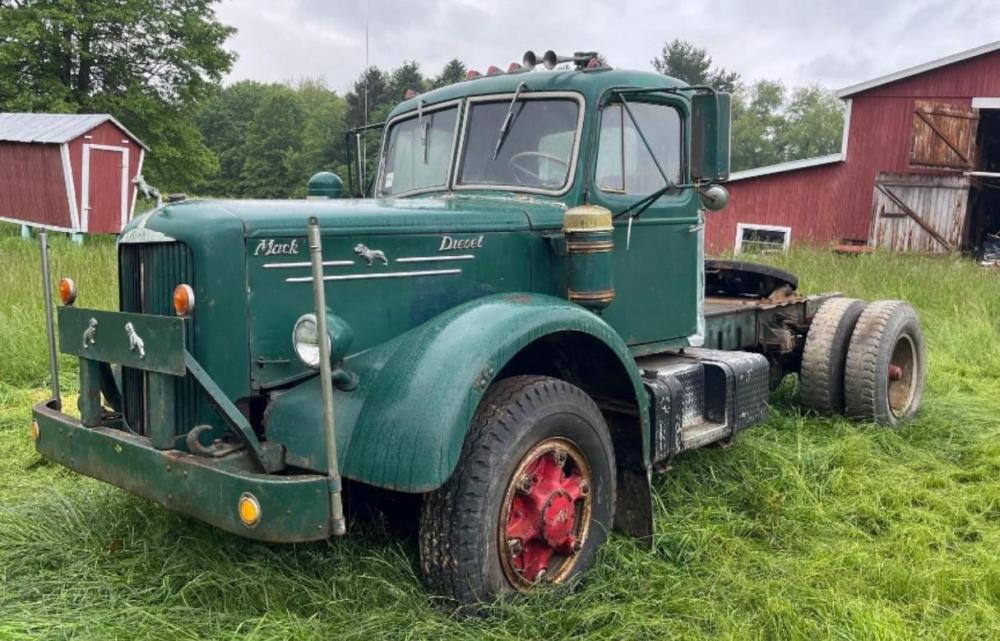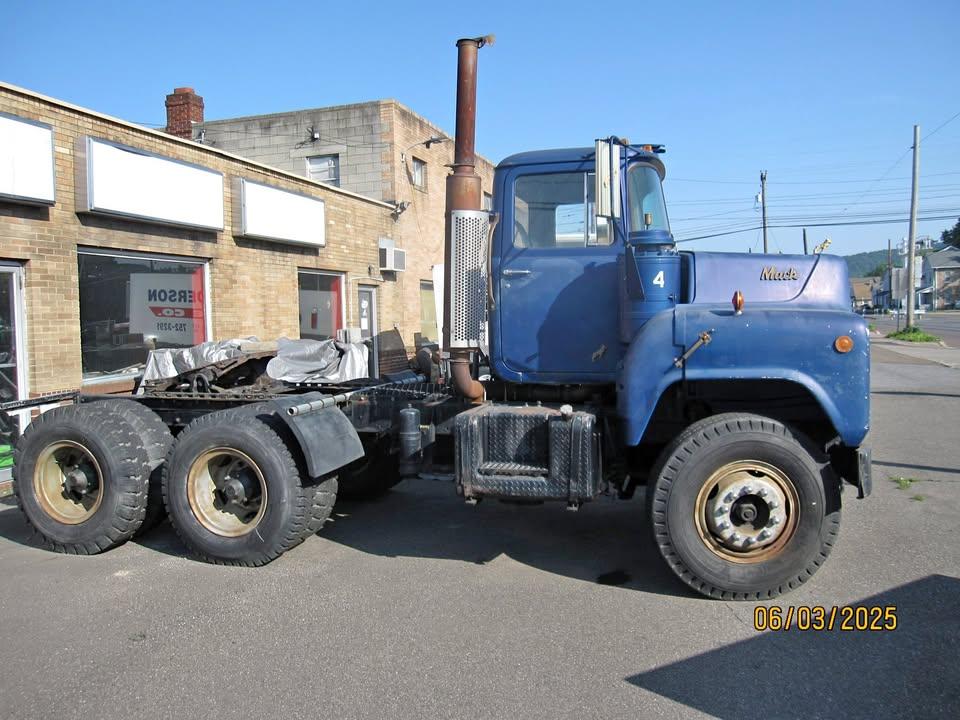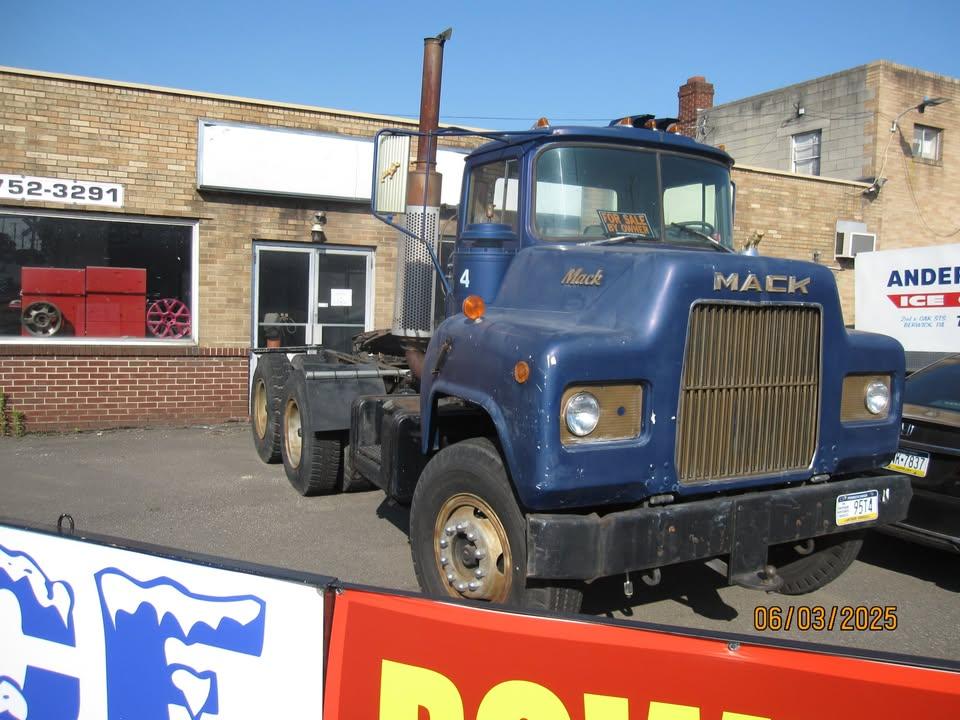-
Posts
1,184 -
Joined
-
Last visited
-
Days Won
5
Content Type
Profiles
Forums
Gallery
Events
Blogs
BMT Wiki
Collections
Store
Everything posted by 67RModel
-
While the expenditures he is discussing are lunacy, the man just voted yes for a bill that cost US taxpayers $3,500,000,000,000 (3.5 trillion). Now he's yapping about cutting $9,000,000,000 (nine billion). Hmmm. 9/3500 = 0.2%. I think he is a hypocrite.
-
2005 Mack Trucks CV Series Granite CV713 Electrical Wiring Diagrams Manual | eBay
-
I have zero clue about anything made after 2007. What is the worst that could happen? It needs a major emissions system repair? What the worst case scenario of that costing? I would figure out what that dollar amount is. and if you can stomach that bill a week after you buy it then I would go for it. Like someone else said the engine itself should be good for double that amount of miles. Based on what I have heard with these new trucks if you want an automatic Allison is the way to go. Then again the same truck with an Allison would probably be $30,000 more than the one your looking at. Same goes for the MDrive. I would see what the worst case repair for that unit typically is and go from there. Anything is possible but its statistically unlikely that you would have a catastrophic emissions system and transmission failure at the same time. Is it possible to get the VIN number and take it to a Mack Dealer and see what major repairs have been done on it. I don't know if dealers are connected like that nationwide but its worth a shot even if its just to see if there are any outstanding updates and/or recall items.
-
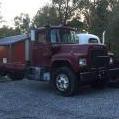
Superliner RW700 Steering axle
67RModel replied to 1961H67's topic in Antique and Classic Mack Trucks General Discussion
Road Pizza -
Saw on Marketplace. Thought it was worth passing along since it looks unused. Sucker looks like they bought it and never used it for anything. Hood says Giant on it. I thought the Giant name was used when Osterlund took over assembly of them which was considerably later than 1971. in 71 they would have still been a division of White Motors. But I'm not up on my Diamond Reo history. Anyway its a really good looking truck and would make someone a nice collector piece who doesn't want to do a full blown restoration. Diamond Reo - Commercial Trucks - Hazleton, Pennsylvania | Facebook Marketplace | Facebook
-

Bananarama - Cruel Summer Music Video
67RModel replied to 67RModel's topic in Mack on the Silver Screen
For some reason I feel like @mowerman could have easily been the driver of that U model with all those wimen up in the cab with him.....🤣 -
IMO pop music from the 1980s was mediocre at best. However, compared to anything produced in the last 15-20 years it almost seems good by comparison. Think what you want of 80s music, specifically this band and song, but they included a killer Mack U model pulling a reefer van in their official music video. It is shown on and off for probably close to 30 seconds. It almost looks like a New England Motor Freight tractor with the NEMF removed from the door. The song and video was released in 1983 and made popular by being in The Karate Kid film. The music video was filmed in Brooklyn NYC. The twin towers and Empire State Building can be seen in the background several times. The U model is shown on and off many times between timestamp. 1:05 to 2:50.
-
I'm not impressed. Kennedy will guaranteed vote for passage of the bill, whatever its final form ends up being. At this point, any congressional representative that votes for legislation that adds a cent to the national debt is deranged. I have seen estimates this bill creates anywhere from $3.3 trillion to $5 trillion of budget deficit over the next 10 years. That deficit will be paid for with new debt. Currently it appears only Senators Rand Paul and Thom Tillis are the only two Republicans, who have the courage do the correct thing and oppose it. However, with that said, I think Tillis is opposing for reasons other than fiscal. So really only a single Republican, US Senator has the country's best long term interest in mind. Sad.
-
Thinking objectively, I think a 600 series Mack with an Eaton transmission from the late 70s was quite scarce then. Probably like hens teeth now. I have little knowledge of the various Eaton transmission iterations, however, I wouldn't be surprised if the mounting locations on a late 70s Eaton are not the same as a 2000s era unit. That is to say even if you could find the correct factory mounts that line up with your frame holes they might not line up with the transmission. My guess is you are going to end up making what you have work via drilling and/or fabricating. My guess is it has been done many times over the years. Seems like many people who end up with an old Mack are looking to dump the Mack trans and swap in an Eaton.
-
You likely missed the point....
-
I think that is extremely debatable and probably incorrect. The same reason that keeps anyone that has nukes from using them would keep Iran from using them as well. They are no different. There is a reason they have never been used since the two were dropped on Japan. If Iran used a nuke on Israel, the 10 largest cities in Iran would be vaporized within 25 minutes. I think mutually assured destruction is 100% real. I think most other people do too. That is why they have never been used again. Additionally I doubt they would nuke the third holiest city in Islam and contaminate / vaporize the Holy Land at large. This is the same Iran that has been "just weeks away" from attaining a nuclear weapon for literally the last 30 years. Just a little over a month ago director Gabbard reported that Iran is nowhere near being able to enrich fuel enough for a nuclear weapon let alone build a nuke. Was she lying? Sure Iran is regional bully and "state sponsor of terrorism". I honestly couldn't care less what they do over there. None of my business. To me they are just a saber rattling FUD that amounts to absolute zilch for average American citizen. To my knowledge Iran has never attacked this country or carried any terrorist attacks on American citizens here. Heck the largest terror attack in our history was carried out by our supposed closest ally and "best friend" in that region. Not one hijacker was Iranian. 15 were Saudis though 🙄. Even though it amounts to absolutely nothing, I highly doubt the "death to America" mantra is totally unfounded. If the US and CIA had not been playing around in Iran back in the 60s and 70s we wouldn't even be here. The US government destabilized the whole country because we are righteous and they are not. And here we are 50 year later still telling them what they can and cant do. Its honestly not hard to see why they are angry. At this point dropping bombs on them and killing their citizens is treating the symptom not the problem. I doubt it created any good will with the average Iranian citizen. Certainly not with any of the radical ones.
-
Obama might be the worst president in modern US history. I certainly would not use his actions to validate anything. It was wrong then and is wrong now. It has nothing to do with Obama, Trump. Or Democrat, Republican. Or Left, Right. The fact that a president can unilaterally bomb another sovereign nation and kill its citizens without Congress' (the people's) consent is heinously troublesome. I don't think US foreign policy is righteous. In fact on the contrary, probably for about the last 80 years US foreign policy has been overall terrible, and has not been in the best interest of the American citizen. I think there is ample evidence to support this. Murder hornets are more of a threat to US citizens than Iran is. But we just spent half a billion dollars leveling sections of their country for our safety. Anecdotally I fell less safe now than I did last Friday afternoon. Not by much but the feeling is there. I think the US meddling in Israel's matters is not in the US citizen's best interest. It matters not but for the record it was more than 75 according to General Dan Caine, chairman of the Joint Chiefs of Staff. As I understand it the third site was leveled using dozens of cruise missiles launched from submarines due to it not being a fortified, underground site. Pentagon reveals how B-2 bombers struck Iran nuclear sites in mission dubbed "Operation Midnight Hammer" - CBS News
-
"America First".....right after I drop these bombs on a sovereign nation without a declaration of war from Congress. 🙄. I heard a retired general say in an interview yesterday say he estimated the entire mission, all things considered, cost the American taxpayer anywhere from from 300 - 500 million dollars. Shameful.
-
If I'm not mistaken this is the same weekend as the Ashland Ohio hot air balloon festival. Weather depending they launch the balloons Thursday, Friday, Saturday, and Sunday night. If your going to the truck show maybe stick around and watch the balloons go up and away. It's quite the sight. I think the balloon launch site is only a mile or two from the fairgrounds where the truck show is. Ashland BalloonFest – Ashland Ohio's Largest Free Event
-
I couldn't swing it this year. Not to mention the poor weather forecast didn't make me feel real bad about not going.
-
-
We have been getting a ton of rain through here lately. The only thing I can figure is they pulled it out of the barn for the auction and they put it on there to keep water from getting in a rusty or bad spot on the cab.
-
Looks to be a really complete and original 1950 Mack LJ Tractor. Selling at auction via Proxibid.com. No affiliation. Just passing along. If someone wanted a nice complete LJ to restore this one would certainly be a good candidate. Looks Like Cummins powered. Located in Mogadore, Ohio. 1950 Mack LJ Semi Truck | Collector Cars Classic & Vintage Cars Classic & Vintage Cars - 1950's | Online Auctions | Proxibid
-
Can't say that I have ever seen a 700 series U model. Would be nice if there was some more pictures and specs. Probably a pretty scarce truck. Not mine. Just reposting and passing along a Marketplace listing I thought was interesting. It looks slightly different than the 600 series U models I have seen. The front fenders and grille look to be about 4"-6" taller. 1974 mack u700 - Commercial Vehicles - Berwick, Pennsylvania | Facebook Marketplace | Facebook
-

Mack meaning
67RModel replied to Mack_man's topic in Antique and Classic Mack Trucks General Discussion
I don't have any facts to verify but what I've gathered over the years is up to the point when econodyne was "introduced" Mack engines were 2100 rpm high torque rise engines that used 5 and 6 speed transmissions. Rated HP was at 2100 rpm. The econodyne engines turn slower and have their rated HP at 1800 or 1750 RPMs to save fuel and less engine noise / driver fatigue. My guess is the there are slight differences in the fuel system and engine internals (cam / pistons) between a 2100 RPM Maxidyne and an 1800 RPM Econodyne. Again no facts. Just anecdotal info... -

1953 Mack LJ
67RModel replied to reb87's topic in Antique and Classic Mack Trucks General Discussion
@reb87 I was just browsing Bring A Trailer's sold listings and noticed this truck sold on there for $11,000 back on 12/9/2023. Not sure if you knew that but here is the listing and bid history. I think you are able to contact and send PM's to people through that site so maybe you could contact the seller and maybe get more information on its history. I wonder what happened to the buyer. He had it about a year and took a total bath on the money. After consignment fees to Ritchie Bros he probably got back less than 20% of what he paid for it. No Reserve: 1953 Mack L-Series Wrecker for sale on BaT Auctions - sold for $11,050 on December 19, 2023 (Lot #131,220) | Bring a Trailer -
Former President Joe Biden diagnosed with prostate cancer
-

1978 rl600 with endtb 676 dead cylinder
67RModel replied to wrightwaymetal's question in Mack Truck Q & A
For $3500 that is worth it even if the engine block is windowed. You can pick up a good running for another $3-4k if you had to. Or you could sell the dump box and hydraulics for $3500 or $4000. Buy a running 4V E6 or fully mechanical E7 for what you sold the bed for. Not to mention its from Washington so you know its rust free. Anyway might just be a broken valve spring or something stupid like that. -
Saw this story messing around on Youtube. I thought it was a pretty neat story. I like how his truck isn't at all shiny and clean, doesn't look fancy, but its impeccably maintained. And he has driven it every day since 1995 and over 4 million miles. Pretty impressive.
- 1 reply
-
- 6
-

-
Call local Mack dealer and give them your VIN. They should still have info for a 1978. Or call Watts Mack, the owner of this website. They have all the dirt on the old stuff. There is a Mack dealer parts guy on here a lot that always seems to come up with something. @The Heinz
BigMackTrucks.com
BigMackTrucks.com is a support forum for antique, classic and modern Mack Trucks! The forum is owned and maintained by Watt's Truck Center, Inc. an independent, full service Mack dealer. The forums are not affiliated with Mack Trucks, Inc.
Our Vendors and Advertisers
Thank you for your support!


